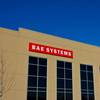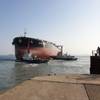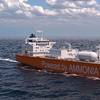Five years since the Panama Canal was handed over to the Panamanian people from the United States, the waterway is running better and safer than ever in its 90 years of operation. Beginning a new century under Panamanian stewardship, the Panama Canal Authority (ACP) has set and broken records, made significant improvements and invested in the equipment and infrastructure of the waterway. These accomplishments have helped the “All-Water Route” (the route from Asia to America’s East Coast via the Panama Canal – and back) become a very attractive option for the industry to move cargo between these markets. The five-year anniversary of the Handover falls on December 31, 2004.
Since the Handover of the Panama Canal, the ACP has shifted its operations from a profit-neutral utility to a market-oriented business model – one that is totally focused on customer service and reliability. The importance of the Panama Canal continues to grow because of increased trade with Asia and the increased popularity of containers.
“We are proud with the improvements we have made in efficiency and reliability of the waterway since assuming full management of its operations. Today, we thank our world-class employees who diligently work to improve our operations and customer service – making the Panama Canal better than ever,” said Administrator/CEO Alberto Alemán Zubieta.
The ACP has achieved its goal to make the Panama Canal more safe, reliable and efficient – while simultaneously increasing its contributions to the Republic of Panama:
• Safer: The number of official accidents decreased from 28 accidents in FY1999 to 10 accidents in FY2004 (The Canal set a safety record in 2004 with the fewest accidents occurring in 81 years).
• More efficient: Canal Waters Time (CWT), the average time it takes a vessel to navigate the Canal, including waiting time for passage, decreased 20 percent from 32.9 hours in FY1999 to 26.7 hours in FY2004. This has been achieved while satisfying a greater demand in tonnage.
• Managing greater demand: Panama Canal/Universal Measurement System (PC/UMS) tonnage increased 17 percent from 227.5 million PC/UMS tons in FY1999 to 266.9 million PC/UMS tons in FY2004, and Panamax vessel transits increased 27 percent, from 4,198 transits in FY1999 to 5,329 in FY2004.
• Increased direct contributions to Panamanian Government: In just four fiscal years, from FY2000 to FY2003, the ACP has contributed a total of $980.3 million.
As provided in the Torrijos-Carter Treaty, signed in 1977 between the Republic of Panama and the United States, the Republic of Panama assumed full responsibility for the administration of the waterway at noon on December 31, 1999.
Of late, the ACP is conducting numerous studies and investing into research to plan the future of the Panama Canal and guarantee the waterway’s safe and reliable service for its customers.
Featured videos

Send in the Drones (to deep, dark, confined maritime spaces)

Taking the First Step Toward Autonomy
Subscribe for
Maritime Reporter E-News
Maritime Reporter E-News is the maritime industry's largest circulation and most authoritative ENews Service, delivered to your Email five times per week











